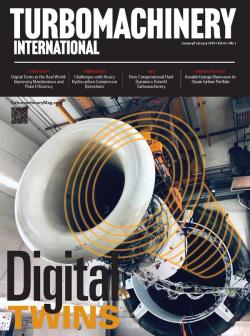
OR WAIT null SECS
© 2024 MJH Life Sciences™ and Turbomachinery Magazine. All rights reserved.
Selecting and Operating Fans
HOW TO DEAL WITH INSTABILITY AND OPERATIONAL PROBLEMS
By AMIN ALMASI
Fan selection begins with definition of its characteristics. The fan should be able to provide sufficient energy and pressure to force a volume of gas to reach a specific flow-rate efficiently.
If the fan delivers too much or too little energy, the capacity, pressure or both will be more or less than required. Capacity control devices, such as dampers, variable- speed variable inlet vanes and variable pitch, are often used to adjust operation. The key point in fan selection is to match fan operation with system requirements.
Most fan manufacturers have standard models and families of various sizes. If the blade angles and proportions are the same, the fan family is said to be homologous. Often, only one fan size in a family of homologous fans will operate at the maximum efficiency point on a given system.
If the fan is too big, operation will be left of the best efficiency point (BEP). If the fan is too small, operation will be right of BEP. In either case the operating point will be off peak and the operation will be inefficient and often unreliable.
Oversized fan
Some experts recommend slightly oversizing a fan to deal with unexpected issues and problems. Due to degradation over time, an extra margin on capacity and power rating are needed. Also, calculated capacity and pressure might be too idealistic. Actual friction and pressure drop could be more than theoretically calculated. Thus, a 10% to 20% margin is recommended.
However, some applications might be better with a slightly undersized fan for reasons of cost and stability. The primary driver of selection, though, is to find a fan that operates most of the time at or around BEP. Selecting and rating a fan from a catalog of fan families and models is a matter of fan-system matching. When it is recognized that two of the catalog sizes may be able to provide the capacity and pressure, try each to compare speed, power, cost and so forth. The final choice is a matter of technical and commercial evaluation.
Instability
There may not be any indication of unstable operation. Pressure and power fluctuations that accompany unsteady fl ow may be so small and rapid that they can only be detected by the most sensitive instruments. But less rapid fluctuations may be detected on the ordinary instruments used in fan testing.
The changes in noise that occur with each change in fl ow rate are easily detected by ear. The main point is that the overall noise level will be higher under unsteady flow conditions compared with steady flow.
Many instability conditions occur only when the operating point is to the left of the defined limits of the curve (surge limit). This point (surge point or instability point) is usually the point of maximum pressure on the fan curve. Pulsation and fluctuation can be prevented by rating the fan to the right of the surge point.
Fans are usually selected on this basis, but it is sometimes necessary to control the gas flow delivered to a value below that at the surge point. This may lead to pulsation and fluctuation. If the required capacity is less than the surge limit, one approach is to bypass or bleed off sufficient gas. In this way, the actual operation is moved to the right side of the surge limit.
Other possible methods are the use of pitch, speed or vane control for f low reduction. In any of these cases, the point of operation on the new fan curve should be to the right of the new surge point.
One condition that is frequently referred to as instability is associated with flow separation in the blade passages of the impeller. It is evidenced by slight discontinuities in the performance curve. There may be a small range of capacities at which two distinctly different pressures may be developed depending on which of the two fl ow patterns exist.
Unsteady f low may develop at low capacities. This is known as blowback or puffing as the gas puffs in and out of a portion of the inlet. Operation in the blowback range should be avoided, particularly with high-energy fans.
Fans in parallel
A different type of unsteady flow may occur when two or more fans are used in parallel. If the individual fan characteristics exhibit a dip in pressure between surge point and operating point, the combined characteristic will contain points where the point of operation of the individual fans may be widely separated even for identical fans.
If the system characteristic intersects the combined-fan characteristic at such a point, the individual fans may suddenly exchange loads. That is, the fan operating at high capacity may become the one operating at low capacity and vice versa. This can produce undesirable shocks on electric motors and ducts.
Careful matching of the fan to the system is required to avoid such cases. This situation has mainly been reported on forward-curved centrifugal fans and axial fans.



